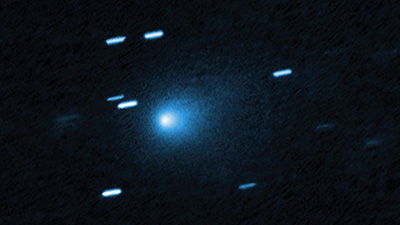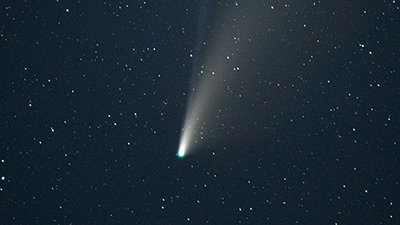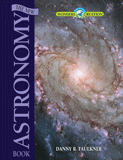
Feedback: Assuming the Origin of Comets
Dr. Danny Faulkner identifies how different assumptions provide different explanations of the origin of comets.
Hi,
I have a work friend who was watching the video by Dr. Jason Lisle about presuppositions, we didn’t get very far because when we got to the point where Dr. Lisle made the statement that “my secular astronomer friends know that comets have a life span and that they should all be gone if the solar system was 4.5 billion years old” my friend said “how does Dr. Lisle know that there is a FIXED number of comets? He’s ASSUMING that there is but he doesn’t know either!”
Here is my question: How does Dr. Lisle figure that there are a fixed number of comets just because he can’t see everywhere.
My friend said that Dr. Lisle is assuming something also with no evidence.
Does that make sense?
– R. P.
Dear R. P.,
Thanks for your question. First, we must understand what astronomers learn from observing comets. We cannot directly observe the origin of comets; we observe them as they orbit the sun. We also observe that they have finite lifetimes because comets are eliminated via three mechanisms:
- Loss of material each time they pass near the sun (which is what causes comets to brighten so much)
- Ejection from the solar system because of gravitational interaction with planets, primarily Jupiter (a phenomenon that has been observed many times)
- Catastrophic loss through collision with planets (observed for the first time in 1994)
We can estimate the maximum orbital periods of comets around the sun—if the orbits were any longer, they would easily escape the sun’s gravity. We can factor the three loss mechanisms with the maximum orbital size to determine that the maximum age of comets must be far less than the supposed 4.6 billion year age of the universe. No one disputes this.
There is no evidence for the Oort cloud.
To explain how comets are still visible today after billions of years, evolutionary astronomers hypothesized the Oort cloud and Kuiper belt to introduce new comets into the inner solar system as comets die off. In this sense, the number of comets is increased into the inner solar system, though there is still a finite number of comets, even if the Kuiper belt and Oort cloud are real. So both evolutionary and creation astronomers think that the number of comets is fixed. There is no evidence for the Oort cloud. Some astronomers think that there is evidence of the Kuiper belt, though that is debatable.
So let’s examine the assumptions regarding the origin of comets. Evolutionists assume that the solar system is billions of years old. To explain why we see comets today, evolutionists have to assume that both the Oort cloud and the Kuiper belt exist. Recent creationists know from the Bible that the solar system is only thousands of years old, so there is no reason to assume that either the Oort cloud or Kuiper belt exist.
Danny
Recommended Resources

Answers in Genesis is an apologetics ministry, dedicated to helping Christians defend their faith and proclaim the good news of Jesus Christ.
- Customer Service 800.778.3390
- Available Monday–Friday | 9 AM–5 PM ET
- © 2026 Answers in Genesis




